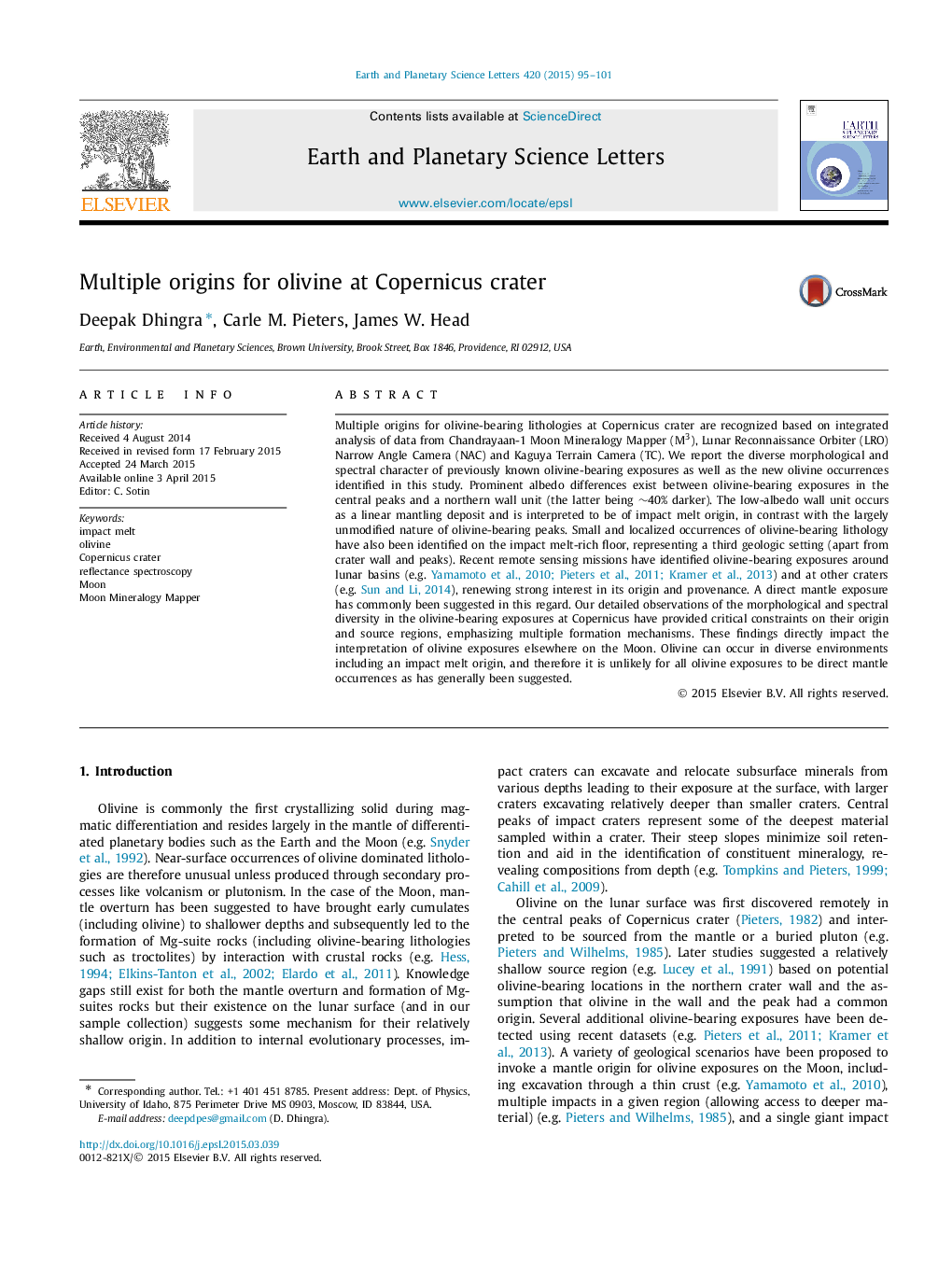| کد مقاله | کد نشریه | سال انتشار | مقاله انگلیسی | نسخه تمام متن |
|---|---|---|---|---|
| 6428161 | 1634736 | 2015 | 7 صفحه PDF | دانلود رایگان |
- Olivine occurrences at Copernicus crater have multiple origins.
- New exposures of olivine have been discovered on the crater floor.
- Northern wall olivine exposure has an impact melt association.
- A common mantle origin for all lunar olivine exposures is unlikely.
Multiple origins for olivine-bearing lithologies at Copernicus crater are recognized based on integrated analysis of data from Chandrayaan-1 Moon Mineralogy Mapper (M3), Lunar Reconnaissance Orbiter (LRO) Narrow Angle Camera (NAC) and Kaguya Terrain Camera (TC). We report the diverse morphological and spectral character of previously known olivine-bearing exposures as well as the new olivine occurrences identified in this study. Prominent albedo differences exist between olivine-bearing exposures in the central peaks and a northern wall unit (the latter being â¼40% darker). The low-albedo wall unit occurs as a linear mantling deposit and is interpreted to be of impact melt origin, in contrast with the largely unmodified nature of olivine-bearing peaks. Small and localized occurrences of olivine-bearing lithology have also been identified on the impact melt-rich floor, representing a third geologic setting (apart from crater wall and peaks). Recent remote sensing missions have identified olivine-bearing exposures around lunar basins (e.g. Yamamoto et al., 2010; Pieters et al., 2011; Kramer et al., 2013) and at other craters (e.g. Sun and Li, 2014), renewing strong interest in its origin and provenance. A direct mantle exposure has commonly been suggested in this regard. Our detailed observations of the morphological and spectral diversity in the olivine-bearing exposures at Copernicus have provided critical constraints on their origin and source regions, emphasizing multiple formation mechanisms. These findings directly impact the interpretation of olivine exposures elsewhere on the Moon. Olivine can occur in diverse environments including an impact melt origin, and therefore it is unlikely for all olivine exposures to be direct mantle occurrences as has generally been suggested.
Journal: Earth and Planetary Science Letters - Volume 420, 15 June 2015, Pages 95-101
